Abstract
In 100 patients intracranial exploration was done soon after severe head injury when signs of transtentorial herniation were present. A third of patients had extracerebral hematomas shown on initial burr hole examination. An additional 18 percent had parenchymal clots of clinical significance disclosed only by angiography after burr hole exploration or at autopsy. Half the patients in whom exploration was done did not have intracranial hematomas of sufficient size to warrant an operative approach. Detailed neurological examinations soon after injury and the availability of more rapid diagnostic tools may improve the accuracy of early diagnosis and allow more specific prognostication in patients with severe head injury.
Full text
PDF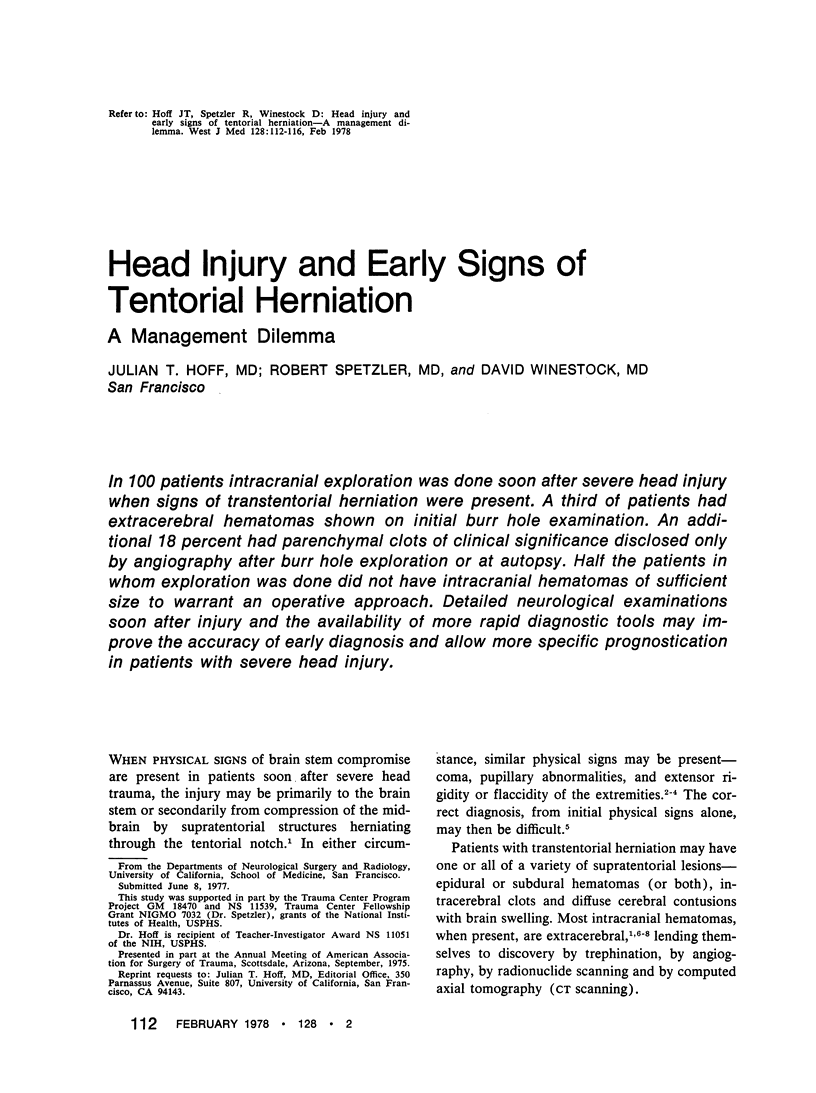
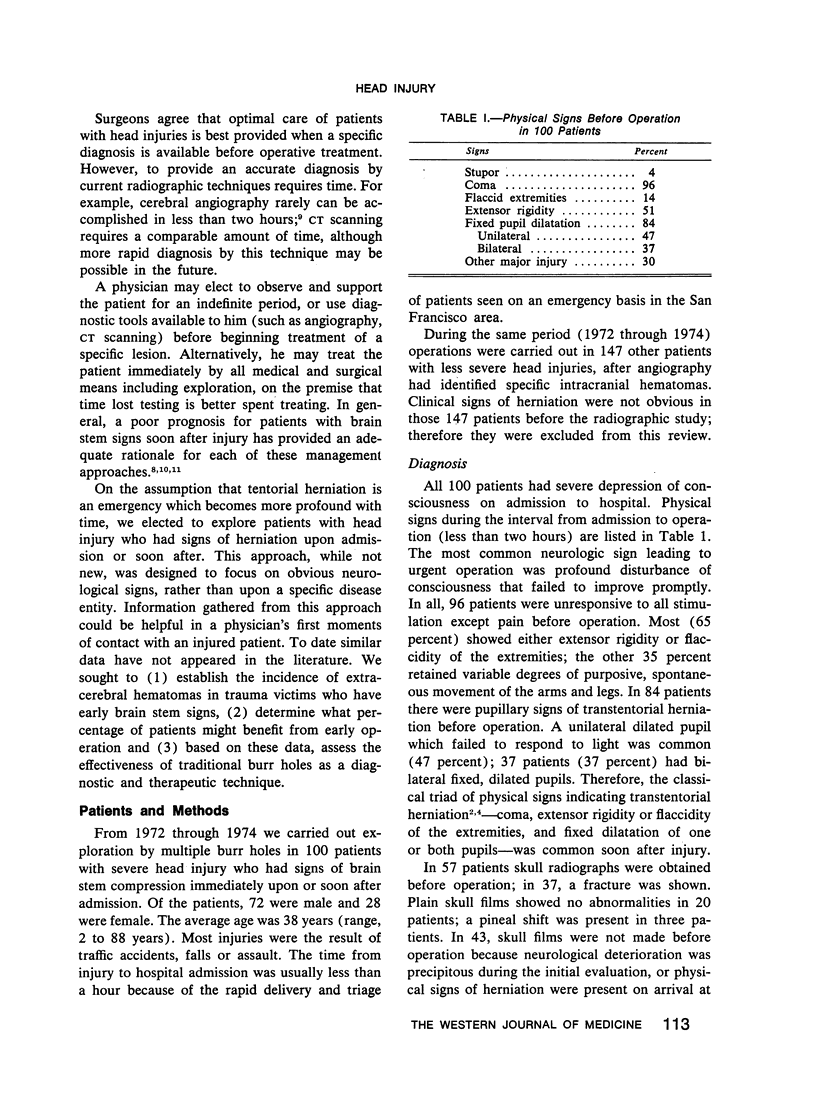
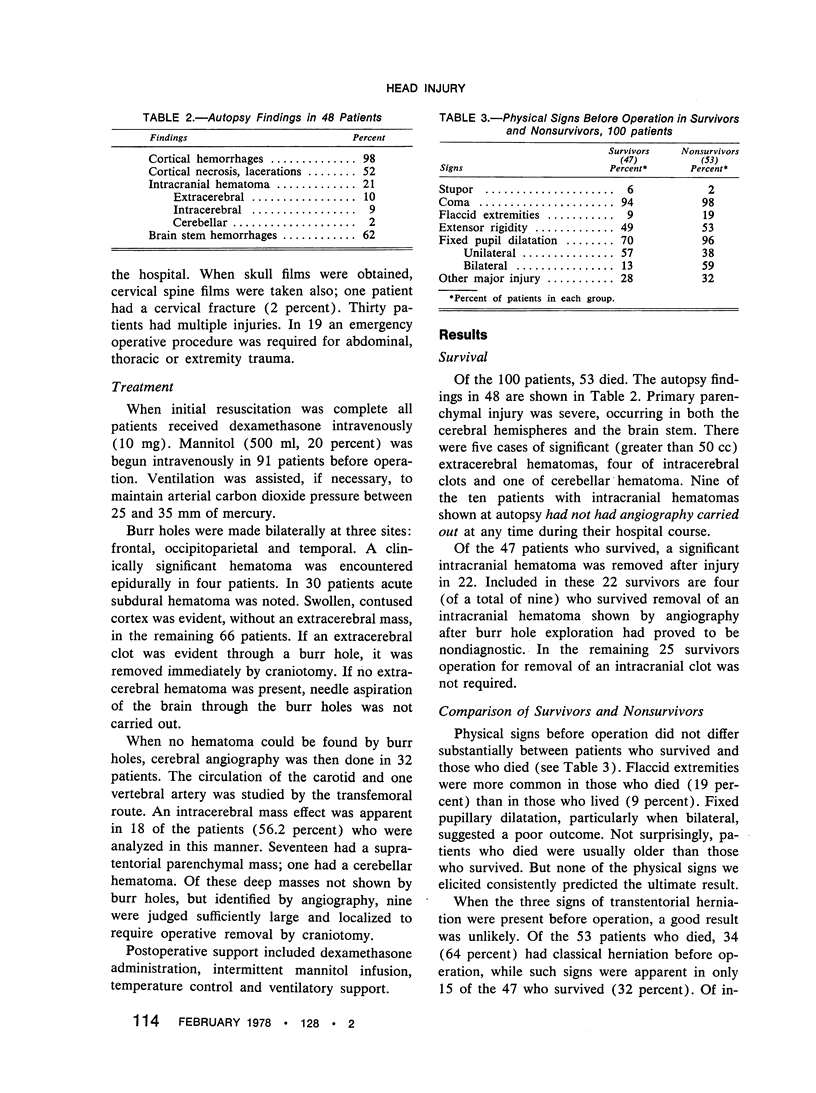
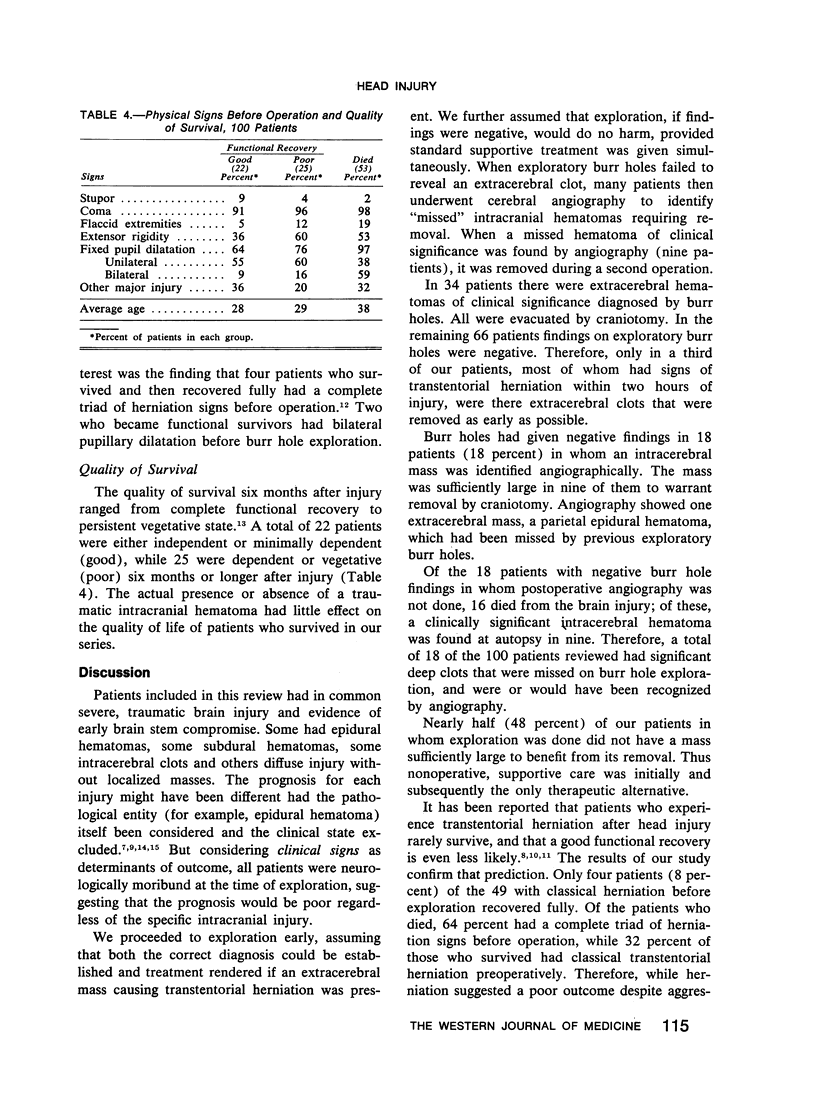
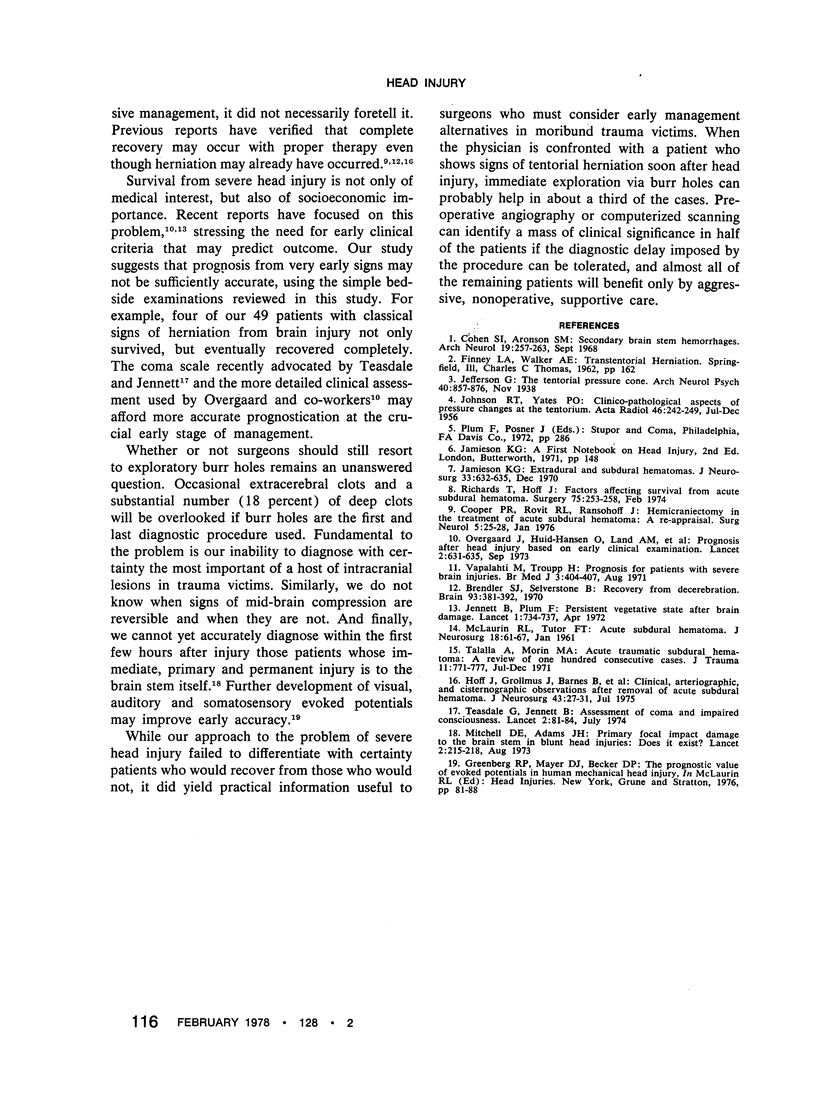
Selected References
These references are in PubMed. This may not be the complete list of references from this article.
- Brendler S. J., Selverstone B. Recovery from decerebration. Brain. 1970;93(2):381–392. doi: 10.1093/brain/93.2.381. [DOI] [PubMed] [Google Scholar]
- Cohen S. I., Aronson S. M. Secondary brain stem hemorrhages. Predisposing and modifying factors. Arch Neurol. 1968 Sep;19(3):257–263. doi: 10.1001/archneur.1968.00480030035003. [DOI] [PubMed] [Google Scholar]
- Cooper P. R., Rovit R. L., Ransohoff J. Hemicraniectomy in the treatment of acute subdural hematoma: a re-appraisal. Surg Neurol. 1976 Jan;5(1):25–28. [PubMed] [Google Scholar]
- Hoff J., Grollmus J., Barnes B., Margolis M. T. Clinical, arteriographic, and cisternographic observations after removal of acute subdural hematoma. J Neurosurg. 1975 Jul;43(1):27–31. doi: 10.3171/jns.1975.43.1.0027. [DOI] [PubMed] [Google Scholar]
- JOHNSON R. T., YATES P. O. Clinicopathological aspects of pressure changes at the tentorium. Acta radiol. 1956 Jul-Aug;46(1-2):242–249. doi: 10.3109/00016925609170833. [DOI] [PubMed] [Google Scholar]
- Jamieson K. G. Extradural and subdural hematomas. Changing patterns and requirements of treatment in Australia. J Neurosurg. 1970 Dec;33(6):632–635. doi: 10.3171/jns.1970.33.6.0632. [DOI] [PubMed] [Google Scholar]
- Jennett B., Plum F. Persistent vegetative state after brain damage. A syndrome in search of a name. Lancet. 1972 Apr 1;1(7753):734–737. doi: 10.1016/s0140-6736(72)90242-5. [DOI] [PubMed] [Google Scholar]
- Mitchell D. E., Adams J. H. Primary focal impact damage to the brainstem in blunt head injuries. Does it exist? Lancet. 1973 Aug 4;2(7823):215–218. doi: 10.1016/s0140-6736(73)93128-0. [DOI] [PubMed] [Google Scholar]
- Overgaard J., Hvid-Hansen O., Land A. M., Pedersen K. K., Christensen S., Haase J., Hein O., Tweed W. A. Prognosis after head injury based on early clinical examination. Lancet. 1973 Sep 22;2(7830):631–635. doi: 10.1016/s0140-6736(73)92477-x. [DOI] [PubMed] [Google Scholar]
- Plum F., Posner J. B. The diagnosis of stupor and coma. Contemp Neurol Ser. 1972;10:1–286. [PubMed] [Google Scholar]
- Richards T., Hoff J. Factors affecting survival from subdural hematoma. Surgery. 1974 Feb;75(2):253–258. [PubMed] [Google Scholar]
- Talalla A., Morin M. A. Acute traumatic subdural hematoma: a review of one hundred consecutive cases. J Trauma. 1971 Sep;11(9):771–777. [PubMed] [Google Scholar]
- Teasdale G., Jennett B. Assessment of coma and impaired consciousness. A practical scale. Lancet. 1974 Jul 13;2(7872):81–84. doi: 10.1016/s0140-6736(74)91639-0. [DOI] [PubMed] [Google Scholar]
- Vapalahti M., Troupp H. Prognosis for patients with severe brain injuries. Br Med J. 1971 Aug 14;3(5771):404–407. doi: 10.1136/bmj.3.5771.404. [DOI] [PMC free article] [PubMed] [Google Scholar]


